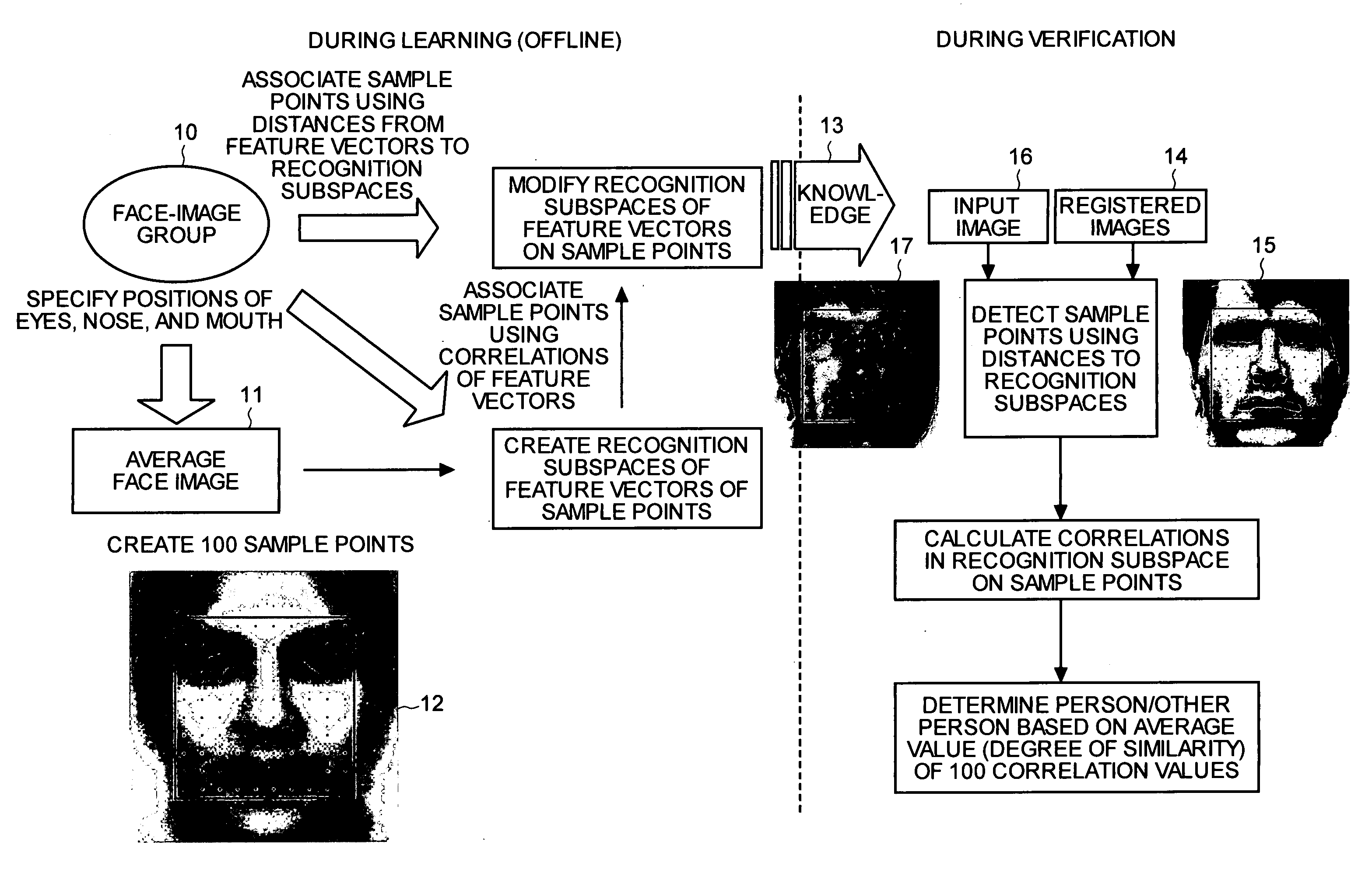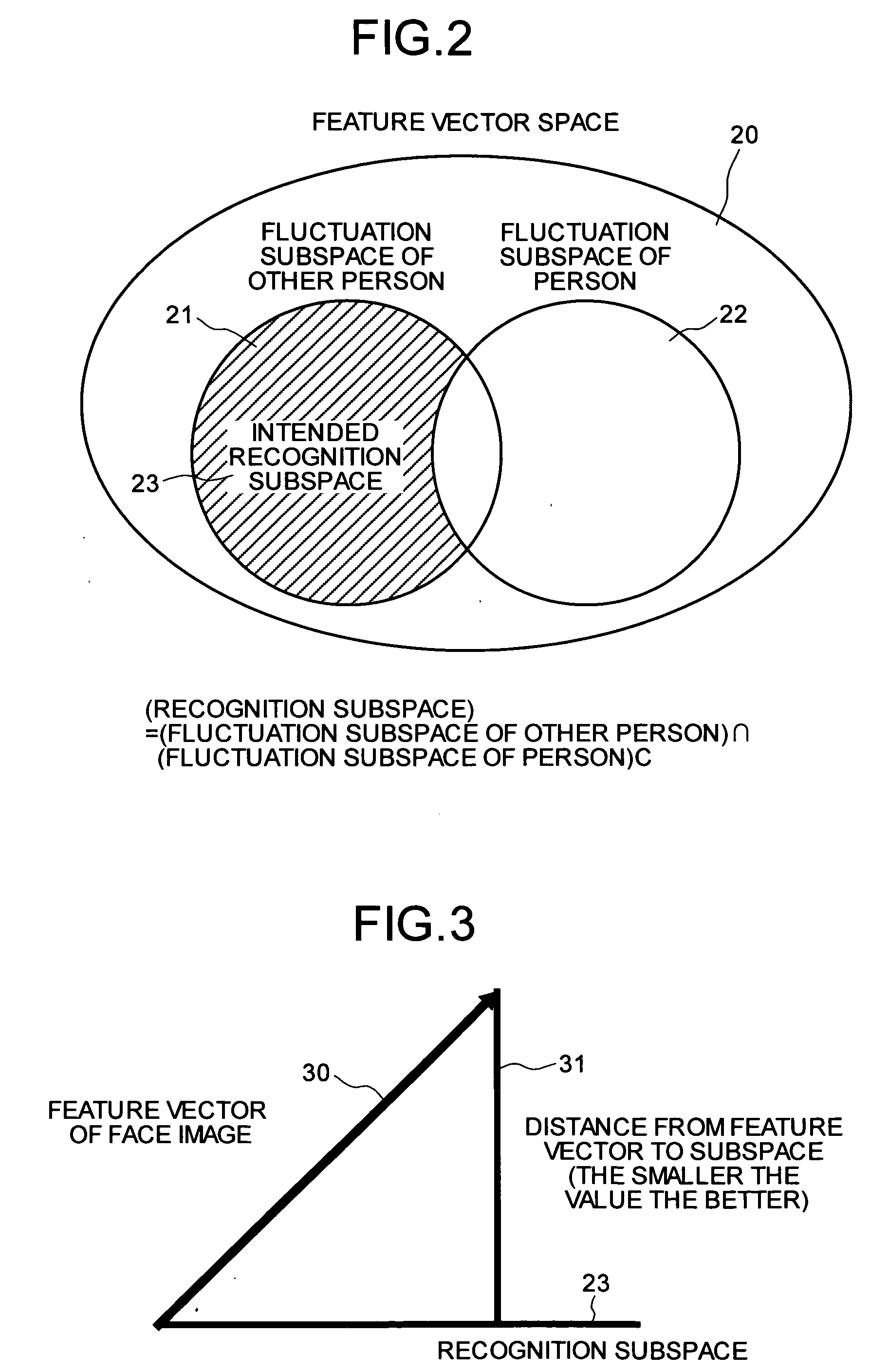Image Recognition Device, Image Recognition Method, and Program for Causing Computer to Execute the Method
a recognition device and image recognition technology, applied in the field of image recognition apparatus, image recognition method, computer, etc., can solve problems such as deteriorating the ability to distinguish a person from other people, and achieve the effect of accurate and efficient verification and determination
- Summary
- Abstract
- Description
- Claims
- Application Information
AI Technical Summary
Benefits of technology
Problems solved by technology
Method used
Image
Examples
first embodiment
[0078]A concept of the image recognition apparatus of a first embodiment will first be described. FIG. 1 is an explanatory view for explaining a concept of an image recognition process according to the first embodiment. As shown in FIG. 1, a face image recognition process of the first embodiment consists of two processes: a process that is performed during offline learning and a process that is performed during verification, and is configured to conduct verification process using knowledge 13 of face image features learned in the process during learning.
[0079]A procedure of the process during offline learning will now be described. Positions of eyes, noses, and mouths are first specified on the images in a face-image group 10. However, at least the eyes need to be specified here. The images are then normalized so that the eyes, noses, and mouths of the images in the face-image group 10 overlap, and gray values of the pixels of the images in the face-image group 10 are averaged to cr...
second embodiment
[0154]Although the degree of similarity between the registered images 14 and the input image 16 is calculated by finding correlation of the feature vectors made of real number elements in the first embodiment, feature vectors made of approximate values binarizing the real number elements of the feature vectors may be created, coincidence of the feature vectors made of approximate values of the registered images 14 and the input image 16 may be calculated to extract a registered image 14 similar to the input image 16, and the thorough verification process of the input image 16 using the extracted registered images 14 may be conducted.
[0155]Narrowing down the registered images 14 similar to the input image 16 at the beginning with simplified calculation and conducting the thorough verification process between the narrowed down registered images 14 and the input image 16 enable high-speed execution of verification process of the registered images 14 and the input image 16 even when a n...
PUM
 Login to View More
Login to View More Abstract
Description
Claims
Application Information
 Login to View More
Login to View More - R&D
- Intellectual Property
- Life Sciences
- Materials
- Tech Scout
- Unparalleled Data Quality
- Higher Quality Content
- 60% Fewer Hallucinations
Browse by: Latest US Patents, China's latest patents, Technical Efficacy Thesaurus, Application Domain, Technology Topic, Popular Technical Reports.
© 2025 PatSnap. All rights reserved.Legal|Privacy policy|Modern Slavery Act Transparency Statement|Sitemap|About US| Contact US: help@patsnap.com



